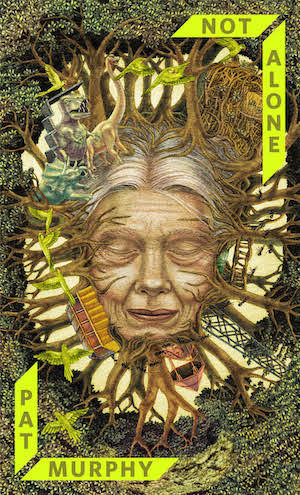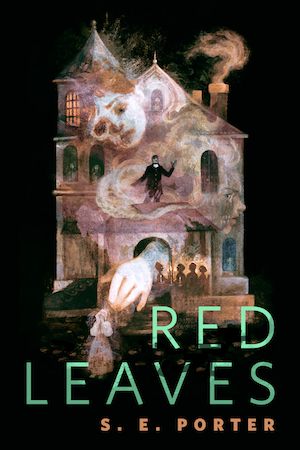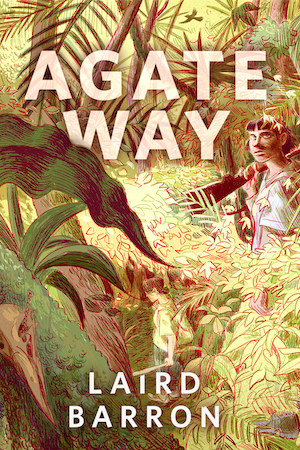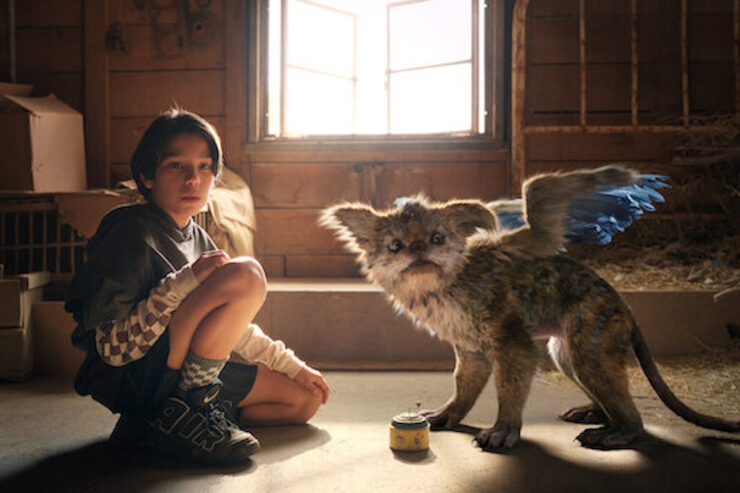Take any legendary monster, and sooner or later someone smooths the horror out and turns it into a fuzzy friend. Just look at Harry and the Hendersons. What Harry is to Bigfoot, Chupa is to the chupacabra.
The film was released on Netflix in 2023, but it’s set in 1996. There’s good reason for that. The Latin American chupacabra sightings began the year before and were still going in the spring, when disaffected American teen Alex grudgingly travels to Mexico to spend spring break with his grandfather and his two cousins.
Alex is mourning his father who recently died of cancer, and he’s had a lifelong resistance to learning Spanish. He’s been subjected to racist hazing in school. In the time-honored tradition of After-School Specials, he’s in San Javier to learn Important Life Lessons and get over his problem with embracing his heritage.
It’s not nearly as preachy as it sounds. Alex’s abuelo is suitably folksy and wise, but he was also a great luchador, until a traumatic brain injury ended his career. The cousins tease Alex, but gently, and sweep him up in their adventures. And there’s the chupacabra.
That’s the other plot, the one that leads off the film and makes Alex’s whole trip worthwhile. Monster hunter/researcher Quinn has been seeking the cryptid for fame and fortune, and in hopes of using its blood for medical research. His expedition finds a young cub hidden in a cave, but before he can capture it, its mother comes literally roaring to the rescue.
This is not the man-sized, vaguely reptilian, kangaroo-like creature of Latin American lore, nor is it the hairless, coyote-sized canine that will turn up in Texas in another decade. Filmmaker Jonás Cuarón has created his own variation on the theme.
Chupa, as Alex names it (it’s never exactly gendered, though people default to “he,” including when referring to the one who must be Chupa’s mother), is roughly coyote-sized. Thirty to fifty pounds, Quinn judges. Its basic shape is koala, but with catlike fur and a lion’s tail. There are spines down its back. It howls like a wolf or a Sasquatch. And it has wings. It’s a koala-lion-gryphon with vaguely canine overtones.
Chupacabra wing feathers are a running theme. They turn up at key points in the plot. When we see a blue feather with white accents, we know a chupacabra has been here.
Chupa is very young, probably not much older than newborn. The adult form is huge. 500 to 800 pounds, says Quinn. Big enough to do serious damage to a human or a vehicle.
They’re not as dangerous as they look. They feed on blood, leaving dual puncture wounds. They are a threat to livestock but not to humans unless provoked. Chupa’s mother doesn’t harm the humans who try to capture her cub; she takes the cub and runs, until she finds a place to hide it and lures the hunters away. They do much more damage to her than she does to them.
Mostly chupacabras live in the mountains, well away from humans. The cub ends up on Abuelo’s ranch after he accidentally hits its mother while driving down the road at night. Abuelo tames it with music and goats’ blood, and the kids quickly discover what he’s up to. Alex actually wakes up to find the cub in his bed, sucking on his arm.
He isn’t horrified by the creature’s vampiric tendencies. It’s only doing what it needs to do to stay alive. Blood-sucking aside, it’s terribly cute, and it’s sweet and cuddly. The whole family comes together to save it from Quinn and return it to its own family.
It’s much the same plot as Harry and the Hendersons, with bonus lucha libre, and significantly less property damage. The chupacabras are downright adorable. I want one. I’d even settle for a nice soft stuffie.
There is a bit of an issue with the title. Chupa means “sucker,” which is a little weird and slightly off-key. Alex actually comments on this in the film.
I suspect it plays better for English viewers, who just see it as a cute nickname. In a way it reflects Alex’s own ambivalence about his heritage. He learns to be proud of it, and he becomes a strong friend and ally to the chupacabras. I wonder if he ever tells anyone back in Kansas City what he did on his spring vacation, or if he’s content to just smile mysteriously and go on about his business.










